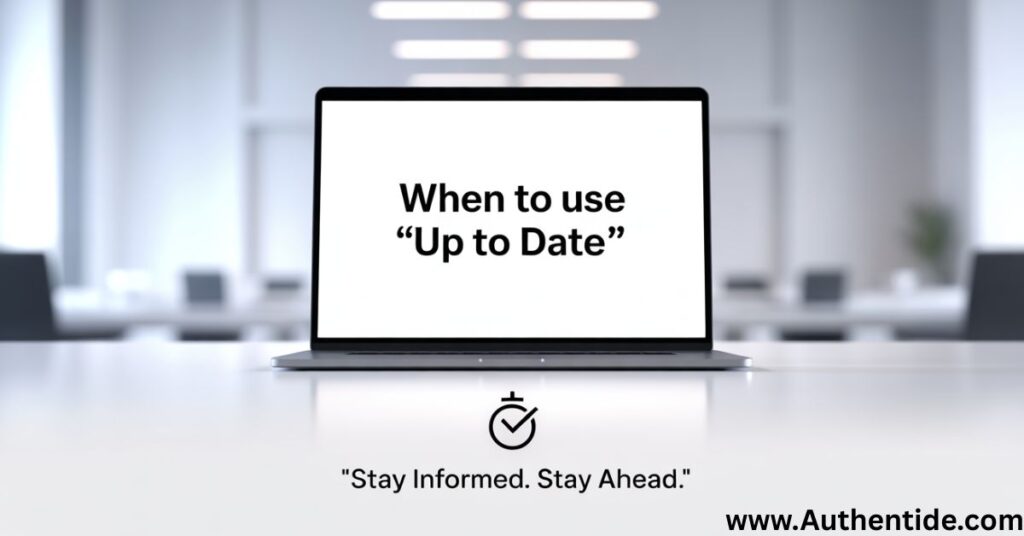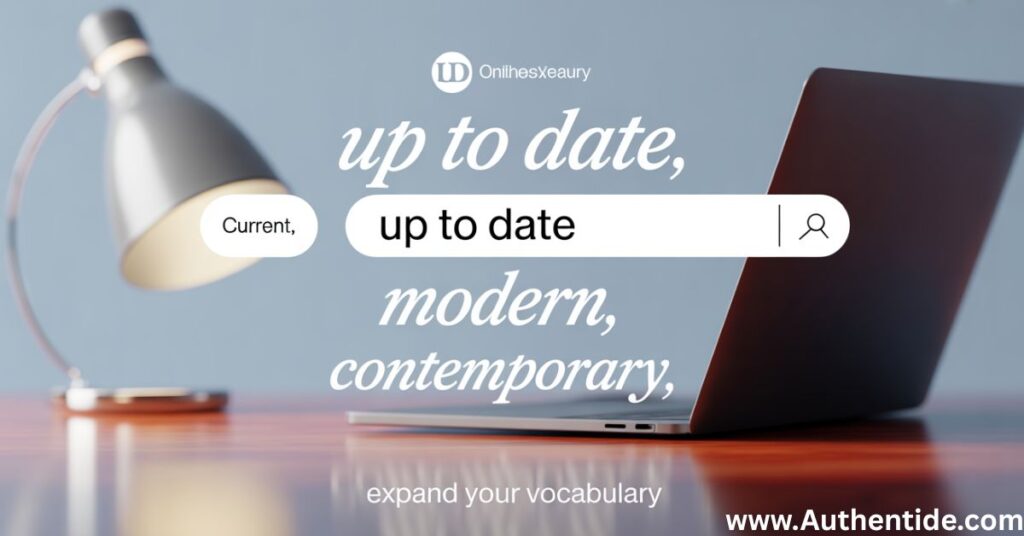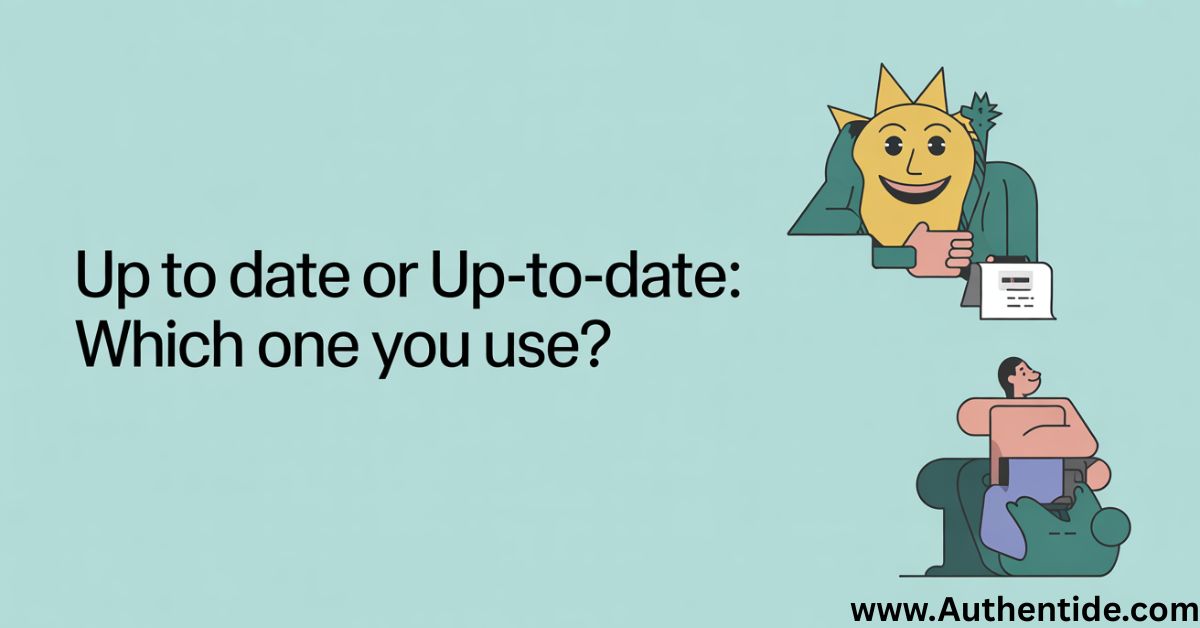Up to date — a phrase we hear daily, yet few pause to consider its grammatical form. Whether you’re reviewing a resume, crafting a blog post, or drafting a professional email, knowing when to use “up to date” versus “up-to-date” can give your writing a polished edge. It’s a subtle distinction, but one that signals fluency in written English.
Imagine receiving this sentence in an email: “Please ensure your records are up to date before Friday.” Now compare it to: “Please send me the up-to-date records by Friday.” Both sound correct, right? But look closely — one is a phrase acting as an adverb, and the other is a compound adjective. So, is “up to date” hyphenated? Well, it depends entirely on how it’s used.
English thrives on nuance, and this pair is a perfect example. While both “up to date” and “up-to-date” refer to something current or modern, choosing the correct form hinges on grammatical context. This article will break down the rules, give you real-world examples (like in emails or blogs), and even share handy synonyms for each usage — so your writing stays sharp, professional, and grammatically correct.
What Does “Up to Date” Mean?
When written as three separate words — up to date — the phrase functions as an adverbial phrase. That means it modifies a verb, describing an action. It tells us how something is done.
For example:
- “Make sure the database is up to date.”
Here, “up to date” describes the state of the database — specifically, that it has the most current information.
In simpler terms, if you’re talking about the condition of something being current, you’ll likely use up-to-date (no hyphens).
What Does “Up-to-Date” Mean?
When used with hyphens — up-to-date — the phrase becomes a compound adjective. This form is used before a noun to describe it.
For example:
- “We need an up-to-date inventory report.”
Now it’s not describing how something is, but what kind of report it is. In this case, a modern, current, or recent one.
So, should up-to-date be hyphenated? If you’re placing it before a noun as an adjective, then yes — hyphenate it.
“Up to Date” vs “Up-to-Date”
Let’s break it down even further. The difference is grammatical:
| Form | Function | Example |
|---|---|---|
| Up to date | Adverbial phrase | “The system is up to date.” |
| Up-to-date | Compound adjective | “We rely on up-to-date software.” |
Knowing whether to hyphenate depends on the role the phrase plays in your sentence. If it comes after the verb, it’s not hyphenated. If it comes before the noun, it usually is hyphenated.
When to Use “Up to Date”

Use up to date as an adverbial phrase when you’re describing a state or condition. This form often follows verbs like is, are, be, keep, stay, etc.
📧 Email Example:
Hi Sara,
Please ensure your files are up to date before submitting the project for review.
This form appears frequently in status updates, technical documentation, or casual communication where the focus is on maintaining accuracy or recency.
Other examples:
- “My passport is up to date.”
- “Keep the profile up to date with new contact details.”
When to Use “Up-to-Date”
Use up-to-date as an adjective before a noun when describing something as being modern, current, or in compliance with the latest standards.
📧 Email Example:
Hi Tom,
Please attach the up-to-date client list before tomorrow’s board meeting.
This form is common in resumes, marketing, web copy, or anything where you’re qualifying a noun.
Other examples:
- “She has an up-to-date understanding of SEO trends.”
- “We provide up-to-date training programs for new hires.”
The Importance of Context
If you’ve ever asked, “Is up to date hyphenated?”, know that context determines everything. Use the non-hyphenated form to describe a state and the hyphenated one when it’s an adjective before a noun.
A good trick? Try placing the phrase after the noun. If it still makes sense without hyphens, you likely don’t need them:
- “Software that is up to date” ✅
- “Up-to-date software” ✅
But:
- “Up to date software” ❌ (feels off, right?)
Synonyms for “Up to Date” (Adverbial Phrase)

When you want to vary your language or avoid repetition, try these:
- Current
- Updated
- Recent
- Modernized
- Contemporary
Example:
- “Ensure the data is updated regularly.”
- “All job descriptions must be current.”
Synonyms for “Up-to-Date” (Adjective Phrase)
Need alternatives for “up-to-date” as a compound adjective? Here are powerful options:
- Modern
- State-of-the-art
- Contemporary
- Cutting-edge
Example:
- “Our company offers state-of-the-art solutions.”
- “They bought a cutting-edge surveillance system.”
Choosing the Right Synonym
When choosing between these synonyms, always consider formality, audience, and clarity. For example, in a legal or corporate email, “current” or “modernized” might fit better. But in a tech blog or marketing copy, “cutting-edge” adds punch.
Examples Using “Up to Date” (Adverbial Phrase)
- “Are your tax documents up to date?”
- “We strive to keep our content up to date.”
- “Her medical history must be up to date before surgery.”
Examples Using “Up-to-Date” (Adjective Phrase)
- “This is the most up-to-date guide on digital marketing.”
- “He maintains an up-to-date schedule.”
- “They use up-to-date security protocols.”
Origins of “Up to Date”
The phrase up to date has its roots in recordkeeping from the 1800s, referring to books or ledgers being balanced to the latest date. Over time, the meaning expanded to represent anything current or recent.
Origins of “Up-to-Date”

The hyphenated form, on the other hand, evolved out of grammatical necessity. As compound adjectives became common in English (think: “high-speed train,” “well-known author”), “up-to-date” naturally emerged to modify nouns clearly and cleanly.
The Most Important Paragraph
The table comparing “up to date” and “up-to-date” is your go-to cheat sheet. It visually simplifies everything you need to know — form, function, and real-world usage. For anyone confused by grammar jargon, that chart is pure gold. Bookmark it. Use it.
Conclusion
So, is it up-to-date hyphenated? Yes — but only when used as an adjective before a noun. The key is to watch where and how you’re using the phrase. Use “up to date” to describe a condition. Use “up-to-date” when modifying a noun directly.
Whether you’re drafting emails, editing a blog, or refining your resume, getting this right shows attention to detail — a small thing that makes a big impression. Now that you’re in the know, go forth and keep your writing up to date — or should we say, up-to-date.

Your go-to place for smart synonyms and celebrity updates. Muhammad Hassan Abid is dedicated to creating useful, engaging content that informs, inspires, and truly serves your curiosity

